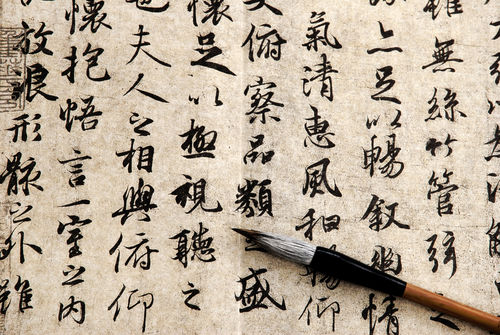Chinese characters (simplified Chinese: 汉字; traditional Chinese: 漢字; pinyin: hànzì; literally: ‘Han characters’) are logogramsdeveloped for the writing of Chinese. They have been adapted to write a number of other Asian languages. They remain a key component of the Japanese writing system (where they are known as kanji) and are occasionally and more so historically, used in the writing of Korean (where they are known as Hanja). They were formerly used for Vietnamese (in a system known as chữ Nôm) and Zhuang (in a system known as Sawndip). Collectively, they are known as CJK characters. Vietnamese is sometimes also included, making the abbreviation CJKV. Of course, like all languages, “Chinese alphabet” has evolved in the 2000 years since the ‘clerical script’ was first created. The written characters have evolved into the written script for many different modern languages such as Cantonese (mother tongue in Hong Kong and Guangdong, China) and Kanji (Japanese characters).Within mainland China these characters continued to develop until 1950 when simplified Mandarin characters were introduced to reduce China’s illiteracy rates. These simplified characters are the most commonly used in China today, although the traditional characters are still used in Taiwan and Hong Kong. It may be obvious to some, less to others, but the Chinese writing system is not based on an alphabet. An alphabet consists of a small number of letters. Letters represent sounds. They spell out how words should be pronounced. Letters don’t have any meaning by themselves. A Chinese character on the other hand is a more complex unit. It contains an indication of pronunciation as well as an indication of meaning. There are more than 100,000 different Chinese characters. It is actually impossible to count them all precisely. The number of useful characters, for a literate person however, is “only” between 3,000 and 6,000. That is still a huge number compared to the 26 letters of our alphabet.
Chinese Characters and Alphabet

Chinese antique calligraphic text onbeige paper with brush
